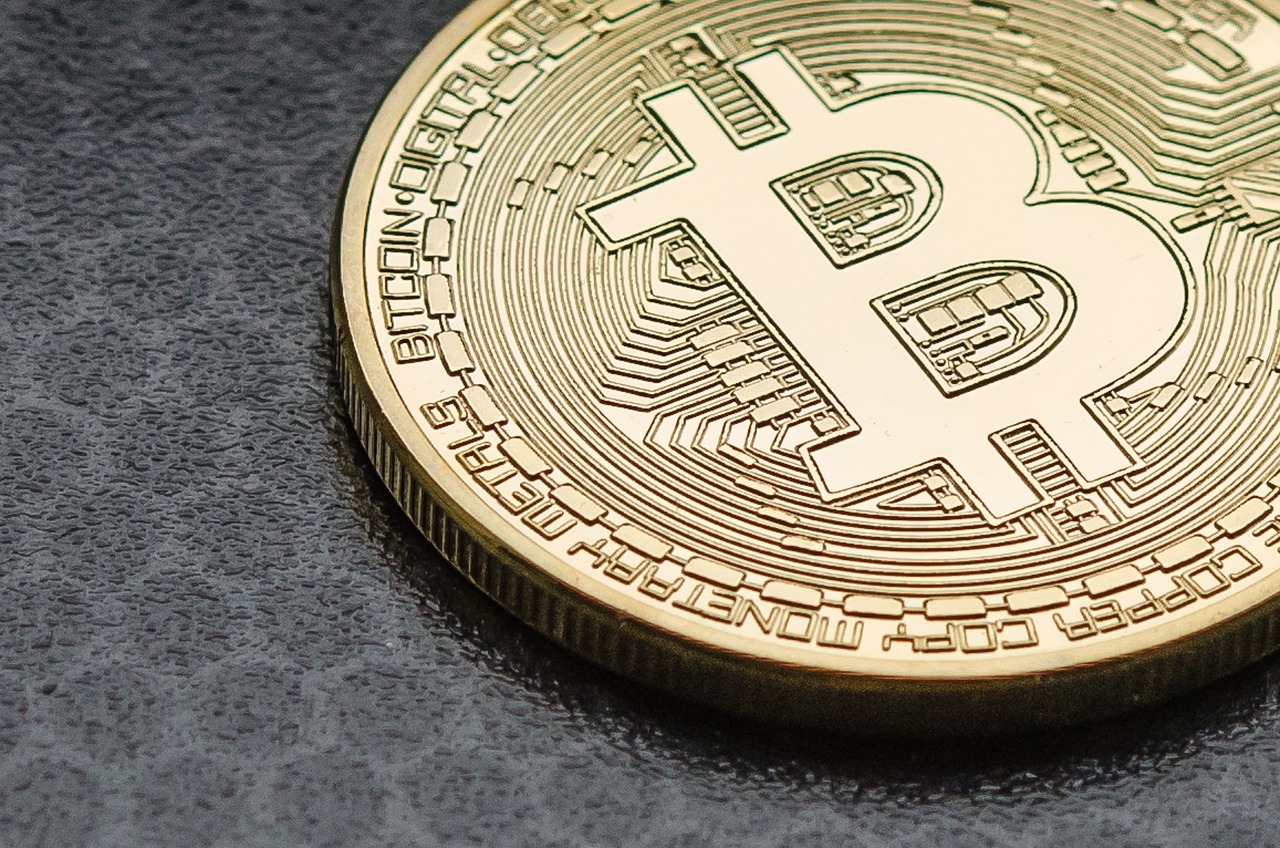Evaluating Market Reactions to Major Crypto News
In the fast-paced world of cryptocurrencies, news travels at lightning speed, and its impact can be felt almost instantly across the market. Have you ever wondered why Bitcoin's price skyrockets after a tweet from a prominent figure or why a regulatory announcement sends shockwaves through the trading community? Understanding how significant events influence market behavior, investor sentiment, and trading patterns is crucial for anyone involved in crypto. This article explores the dynamics of crypto markets in response to news, offering insights that can help you navigate this volatile landscape.
The cryptocurrency market is unlike any other financial market. It operates 24/7, meaning that news can break at any time, leading to immediate reactions from traders and investors alike. When a major event occurs—be it regulatory news, technological advancements, or security breaches—the market often reacts in ways that can seem unpredictable. However, by examining past events and their outcomes, we can start to identify patterns and trends that may help us anticipate future movements.
For instance, consider the impact of regulatory news. When a government announces new regulations regarding cryptocurrencies, the market can experience significant fluctuations. Positive regulatory news, such as the acceptance of cryptocurrency by a major financial institution, can lead to a surge in prices. Conversely, negative news, such as a ban on crypto trading, can result in steep declines. Understanding these reactions can empower investors to make informed decisions and capitalize on market opportunities.
Technological advancements also play a pivotal role in shaping market sentiment. Innovations like blockchain upgrades or the introduction of decentralized finance (DeFi) solutions can create excitement and optimism among investors, leading to increased buying activity. For example, when Ethereum introduced its transition to Ethereum 2.0, the market buzzed with anticipation, resulting in a notable price increase. By staying informed about technological developments, investors can better position themselves to take advantage of potential market shifts.
Moreover, security breaches can have a devastating impact on investor trust and market stability. A high-profile hack can lead to panic selling, causing prices to plummet. The infamous Mt. Gox hack in 2014 serves as a stark reminder of how vulnerable the crypto market can be. When trust is shaken, the consequences can ripple throughout the entire ecosystem. Understanding these dynamics is essential for any investor looking to navigate the often-turbulent waters of cryptocurrency trading.
As we delve deeper into the various factors that influence market reactions, we will explore case studies of major technological breakthroughs, analyze the effects of partnerships and collaborations, and discuss how market predictions can be made based on news trends. Each of these elements contributes to the ever-evolving narrative of the cryptocurrency market, making it imperative for investors to stay informed and adaptable.
- How does regulatory news affect cryptocurrency prices? Regulatory news can lead to significant price changes, as it influences investor confidence and market stability.
- What role do technological advancements play in market reactions? Innovations can create excitement and optimism, often resulting in increased buying activity and price surges.
- How can security breaches impact the crypto market? Security incidents can lead to panic selling and a loss of trust, causing significant price drops and market instability.
- Why are partnerships important in the crypto space? Strategic partnerships can enhance a cryptocurrency's credibility and market position, influencing investor perception and market performance.
- What is sentiment analysis and how is it used in crypto? Sentiment analysis gauges market reactions to news, helping investors predict price movements based on public perception.

The Impact of Regulatory News
When it comes to the world of cryptocurrencies, regulatory news can feel like a double-edged sword. On one side, it can offer clarity and stability; on the other, it can cause chaos and uncertainty. Just think about it—when governments announce new regulations, it’s as if the ground beneath investors shifts, creating ripples that can lead to significant price fluctuations. Understanding how these announcements affect the market is essential for anyone looking to navigate the often-turbulent waters of crypto trading.
For instance, when a country decides to embrace cryptocurrency regulation, it can lead to a surge in investor confidence. This newfound optimism often results in a spike in prices as more people rush to buy in. Conversely, if a government signals a crackdown or implements harsh regulations, it can trigger panic selling, driving prices down and leading to a market downturn. The psychology of fear and greed plays a huge role here, and regulatory news is often the catalyst that ignites these emotions.
To illustrate this dynamic, let’s look at a few key examples:
| Date | Event | Market Reaction |
|---|---|---|
| December 2017 | China bans ICOs | Bitcoin price dropped by 30% in a week |
| April 2021 | U.S. Treasury proposes stricter regulations on crypto transactions | Market saw a decline of 10% in 48 hours |
| June 2021 | El Salvador adopts Bitcoin as legal tender | Bitcoin price surged by 20% in one day |
These examples show just how potent regulatory news can be. The market doesn’t just react to the news itself; it reacts to the perception of what that news means for the future. Investors often scramble to interpret the implications of regulations, leading to a flurry of trading activity that can exacerbate price swings. It's crucial for traders to stay informed and be able to quickly assess the potential impact of regulatory announcements on their investments.
Moreover, the global nature of cryptocurrency means that regulatory news from one country can have far-reaching effects on markets worldwide. For instance, if a major economy like the United States or China implements new regulations, it can influence investor behavior not just in those countries, but globally. Investors often look for signals from these larger markets to gauge how smaller markets might react.
In conclusion, regulatory news is a powerful force in the cryptocurrency market. It can shape investor sentiment, drive prices up or down, and ultimately dictate the direction of market trends. For anyone involved in crypto trading, staying ahead of regulatory developments is not just advisable—it’s essential.
- How do regulatory changes impact cryptocurrency prices? Regulatory changes can either boost or diminish investor confidence, leading to significant price fluctuations.
- Why is it important to follow regulatory news in crypto? Following regulatory news helps investors make informed decisions and anticipate market movements.
- Can regulatory news affect global markets? Yes, regulatory news from major economies can have a ripple effect on cryptocurrency markets worldwide.

Technological Advancements and Market Sentiment
The world of cryptocurrency is constantly evolving, and one of the most significant drivers of market sentiment is technological advancements. As new innovations emerge, they not only change the way we interact with digital currencies but also influence how investors perceive the entire ecosystem. For instance, when a groundbreaking technology is announced, it can send ripples through the market, causing prices to soar or plummet based on investor sentiment. This is akin to a ripple effect in a pond; one small stone can create waves that reach far and wide.
Take the rise of blockchain technology, for example. Each time a new feature or improvement is introduced—be it enhanced security protocols or faster transaction speeds—it can lead to a significant shift in market dynamics. Investors are always on the lookout for the next big thing, and when they see potential in a new technology, their enthusiasm can lead to increased buying activity. Conversely, if a technology fails to meet expectations or is met with skepticism, the market can react negatively, leading to sell-offs and decreased confidence.
In the realm of cryptocurrency, understanding these technological shifts is crucial. For instance, the introduction of smart contracts paved the way for decentralized applications (dApps), which expanded the use cases for cryptocurrencies beyond simple transactions. This innovation not only enhanced the functionality of various tokens but also attracted a new wave of investors eager to capitalize on the possibilities offered by smart contracts. The excitement surrounding such advancements can lead to a surge in market interest, pushing prices higher.
Moreover, the rise of Decentralized Finance (DeFi) has dramatically altered how investors view cryptocurrencies. DeFi innovations have created a new financial ecosystem that operates without traditional intermediaries, allowing users to lend, borrow, and trade assets in a decentralized manner. This shift has not only attracted seasoned investors but has also drawn in those who were previously hesitant to engage with cryptocurrencies. The market's response to DeFi news has been overwhelmingly positive, often leading to significant price increases for related tokens.
However, it’s not just about the excitement of new technologies. The market also reacts to the scalability solutions that aim to improve transaction speeds and reduce costs. For instance, when news broke about Layer 2 solutions like the Lightning Network for Bitcoin or Optimistic Rollups for Ethereum, the market buzzed with anticipation. Investors recognized the potential of these technologies to alleviate congestion and enhance user experience, leading to increased confidence in the respective cryptocurrencies.
To illustrate the impact of technological advancements on market sentiment, let's take a look at a few notable case studies:
| Technology | Impact on Market | Investor Sentiment |
|---|---|---|
| Smart Contracts | Increased use of Ethereum and dApps | Highly positive, leading to price surges |
| DeFi Platforms | Massive influx of investment into DeFi tokens | Very optimistic, attracting new investors |
| Layer 2 Solutions | Improved transaction speeds and lower fees | Encouraging, boosting confidence in scalability |
In conclusion, the interplay between technological advancements and market sentiment is a fascinating aspect of the cryptocurrency landscape. As new technologies emerge, they create opportunities and challenges that can significantly influence investor behavior. Staying informed about these developments is essential for anyone looking to navigate the ever-changing crypto market effectively.
- What are technological advancements in cryptocurrency?
Technological advancements refer to improvements and innovations in blockchain technology, such as smart contracts, DeFi platforms, and scalability solutions that enhance the functionality and usability of cryptocurrencies. - How do technological advancements affect market sentiment?
Positive technological advancements can lead to increased investor confidence and buying activity, while negative news or failures can cause sell-offs and decreased trust in the market. - What is DeFi and why is it important?
Decentralized Finance (DeFi) refers to financial services that operate on blockchain technology without traditional intermediaries, providing greater accessibility and innovation in the financial sector. - How do investors react to news about scalability solutions?
Investors generally respond positively to news about scalability solutions, as they indicate improvements in transaction efficiency and user experience, which can lead to increased adoption of the cryptocurrency.

Case Studies of Major Technological Breakthroughs
The cryptocurrency landscape is continuously evolving, driven by remarkable technological breakthroughs that not only enhance the functionality of digital currencies but also significantly impact market behavior. One of the most notable examples is the introduction of **smart contracts** on the Ethereum blockchain. Smart contracts revolutionized how transactions are executed by allowing self-executing contracts with the terms of the agreement directly written into code. This innovation not only boosted investor confidence but also led to a surge in Ethereum's price, showcasing how technological advancements can create a ripple effect in the market.
Another compelling case study is the rise of **Non-Fungible Tokens (NFTs)**. Initially, NFTs were seen as a niche market, primarily for digital art. However, as platforms like OpenSea gained popularity, the NFT market exploded, attracting attention from mainstream investors and celebrities alike. The sudden influx of capital into NFTs demonstrated how technological innovation can create entirely new markets, leading to significant price volatility across various cryptocurrencies. For instance, when high-profile celebrities began endorsing NFTs, the prices of associated tokens skyrocketed, illustrating the profound impact of technological trends on market sentiment.
Furthermore, the development of **Layer 2 scaling solutions** like the Lightning Network for Bitcoin has also played a pivotal role in shaping market dynamics. These solutions aim to enhance transaction speeds and reduce costs, addressing one of the most significant challenges facing cryptocurrencies today. Market reactions to news about such advancements are often immediate and pronounced. For example, when the Lightning Network was first implemented, Bitcoin's transaction volume increased dramatically, leading to a bullish market sentiment. Investors recognized the potential for Bitcoin to compete with traditional payment systems, driving prices upward as confidence in its scalability grew.
In addition to these examples, the introduction of **Decentralized Finance (DeFi)** platforms has transformed the way investors interact with cryptocurrencies. DeFi allows users to lend, borrow, and earn interest on their crypto holdings without the need for traditional financial intermediaries. The launch of major DeFi projects often triggers a wave of excitement in the market, leading to increased trading volumes and price surges across various tokens. For instance, the launch of Compound, a decentralized lending platform, resulted in a significant increase in the price of several DeFi tokens, as investors sought to capitalize on the new opportunities presented by this technological shift.
To summarize, the case studies of these major technological breakthroughs highlight the intricate relationship between innovation and market behavior in the cryptocurrency space. Each advancement not only enhances the functionality of digital assets but also influences investor sentiment and trading patterns. As the crypto ecosystem continues to evolve, it’s crucial for investors to stay informed about these technological trends and their potential implications on the market.
- What are smart contracts, and how do they impact the crypto market?
Smart contracts are self-executing contracts with the terms directly written into code. They enhance transaction efficiency and have significantly boosted investor confidence in cryptocurrencies like Ethereum. - How did NFTs change the perception of digital assets?
NFTs created a new market for unique digital assets, attracting mainstream attention and leading to significant price volatility, as seen with endorsements from celebrities. - What role do Layer 2 solutions play in cryptocurrency?
Layer 2 solutions improve transaction speeds and reduce costs, addressing scalability issues and enhancing the overall utility of cryptocurrencies like Bitcoin. - What is DeFi, and why is it important?
Decentralized Finance (DeFi) allows users to engage in financial activities without intermediaries, leading to new investment opportunities and shaping market dynamics.

Decentralized Finance (DeFi) Innovations
Decentralized Finance, or DeFi, has been nothing short of a revolution in the world of cryptocurrency. Imagine a financial system that operates without traditional banks or intermediaries, where users have complete control over their assets. This is the essence of DeFi. With its rapid growth, innovations in this space have significantly influenced market reactions and investor behavior. As these innovations emerge, they often create waves of excitement and speculation in the crypto markets.
One of the most compelling aspects of DeFi is its ability to democratize finance. It allows anyone with an internet connection to access financial services, such as lending, borrowing, and trading, without the barriers typically imposed by traditional financial institutions. This accessibility has led to a surge in interest and investment in DeFi projects, which can cause price volatility as investors rush to capitalize on new opportunities. For instance, when new DeFi protocols are launched, they often attract massive liquidity, leading to sharp price movements in the underlying tokens.
Additionally, innovations like automated market makers (AMMs) and yield farming have transformed how investors interact with cryptocurrencies. AMMs allow users to trade without the need for an order book, providing instant liquidity and often lower fees. Yield farming, on the other hand, incentivizes users to lock their assets in DeFi protocols in exchange for rewards, creating a new layer of engagement within the community. This innovative approach to earning passive income has led to increased participation and speculation, further driving market dynamics.
However, it’s essential to recognize that with innovation comes risk. The DeFi space has seen its fair share of security breaches and exploits, which can lead to significant market downturns. When news breaks of a hack on a popular DeFi protocol, investor trust can quickly evaporate, causing panic selling and a sharp decline in prices. The dual nature of DeFi—offering both incredible opportunities and substantial risks—creates a complex landscape for investors.
In summary, the impact of DeFi innovations on market reactions cannot be overstated. As these technologies continue to evolve, they will undoubtedly shape the future of finance and the cryptocurrency market. Investors must stay informed and agile, ready to adapt to the rapidly changing environment. Understanding the implications of DeFi innovations is crucial for making informed trading decisions and navigating the exciting yet volatile world of cryptocurrencies.
- What is DeFi? DeFi, or Decentralized Finance, refers to financial services that are built on blockchain technology, allowing users to manage their assets without intermediaries.
- How do DeFi innovations affect the cryptocurrency market? Innovations in DeFi can lead to increased investor interest and market volatility, as they create new opportunities for earning and trading.
- What risks are associated with DeFi? While DeFi offers many benefits, it also comes with risks such as security vulnerabilities and market fluctuations that can lead to significant losses.

Layer 2 Solutions and Scalability
Layer 2 solutions have emerged as a groundbreaking approach to addressing the scalability issues that plague many blockchain networks, particularly Ethereum. As the demand for transactions skyrockets, the inherent limitations of the base layer become apparent. Imagine trying to fit a thousand people into a small room; it simply won’t work without some creative solutions. Layer 2 solutions act as that creative workaround, allowing for increased transaction throughput and reduced fees, which are essential for the growth of the cryptocurrency ecosystem.
These solutions operate on top of existing blockchains, enabling faster and cheaper transactions while still benefiting from the security of the underlying layer. There are several types of Layer 2 solutions, including:
- State Channels: These allow participants to conduct transactions off-chain, only settling on the main chain when necessary. This dramatically reduces congestion and fees.
- Sidechains: Independent blockchains that run in parallel to the main chain, allowing for the transfer of assets between the two without burdening the main network.
- Rollups: These bundle multiple transactions into a single one, significantly enhancing throughput while maintaining security.
As news of these innovations spreads, market reactions can be quite pronounced. For instance, when Ethereum announced its shift toward Layer 2 solutions, investor enthusiasm surged, leading to a notable price increase. This excitement is not just a flash in the pan; it reflects a broader trend where the community begins to recognize the potential for these technologies to fundamentally alter the landscape of cryptocurrency.
Moreover, the scalability provided by Layer 2 solutions is vital for real-world applications of blockchain technology. Businesses are more likely to adopt cryptocurrencies when they can ensure quick and cost-effective transactions. As a result, the market's perception of a cryptocurrency can shift dramatically based on developments in Layer 2 technologies. For example, if a major project successfully implements a Layer 2 solution that significantly enhances transaction speeds and reduces costs, it could lead to a rush of investments, reminiscent of a gold rush, where everyone wants to get in on the action.
In summary, Layer 2 solutions play a crucial role in enhancing the scalability of blockchain networks. Their impact is felt not only in technical improvements but also in the broader market dynamics, as they can lead to increased investor confidence and participation in the cryptocurrency space. As these technologies continue to evolve, they will undoubtedly shape the future of how we perceive and utilize cryptocurrencies.
What are Layer 2 solutions?
Layer 2 solutions are technologies built on top of existing blockchains to enhance scalability, allowing for faster and cheaper transactions.
How do Layer 2 solutions improve transaction speeds?
They enable off-chain transactions or bundle multiple transactions into one, significantly reducing the load on the main blockchain.
What types of Layer 2 solutions exist?
Common types include state channels, sidechains, and rollups, each offering unique benefits for scalability.
Why are Layer 2 solutions important for the cryptocurrency market?
They enhance user experience by lowering transaction costs and increasing speed, which can lead to greater adoption and investment in cryptocurrencies.

Market Reactions to Security Breaches
In the fast-paced world of cryptocurrency, news travels at lightning speed, and none can shake the market quite like a security breach. When hackers breach a crypto exchange or exploit vulnerabilities in a blockchain, the ripple effects can be felt across the entire ecosystem. Investors, often fueled by fear and uncertainty, react instinctively, leading to significant price fluctuations and a general sense of panic. But why does this happen? Well, it boils down to trust. In an industry where trust is paramount, any breach can instantly erode confidence among investors.
To illustrate this point, let's take a look at some notable security incidents and their immediate impacts on the market:
| Incident | Date | Impact on Market |
|---|---|---|
| Bitfinex Hack | August 2016 | Bitcoin dropped by over 20% in the days following the breach. |
| Coincheck Hack | January 2018 | NEM's price plummeted, causing a market-wide downturn. |
| Poly Network Hack | August 2021 | Short-term panic led to a significant dip in various altcoins. |
As you can see from the table, the aftermath of these breaches often results in a sharp decline in prices. Investors tend to sell off their holdings, fearing that they too could fall victim to similar attacks. This behavior is not just a reaction to the incident itself; it is also a reflection of the broader market sentiment. When one major player falters, it creates a domino effect, leading to widespread panic selling.
Interestingly, the market can also exhibit a recovery pattern post-breach. In some cases, once the dust settles and security measures are reinforced, investors may regain confidence, leading to a rebound in prices. However, this recovery is often slow and fraught with skepticism. The initial reaction to a breach can be likened to a rollercoaster ride: it starts with a steep drop, followed by a gradual ascent, but the thrill of uncertainty always lingers in the air.
Moreover, the long-term implications of security breaches can be profound. They can lead to increased regulatory scrutiny, which might be seen as a double-edged sword. On one hand, stricter regulations can enhance security and build trust; on the other, they might stifle innovation and drive some investors away. The balance between security and freedom is a delicate one, and how the market navigates these waters can define its future.
Ultimately, understanding market reactions to security breaches is crucial for any investor looking to navigate the volatile waters of cryptocurrency. Keeping an eye on news trends, as well as the sentiment surrounding these incidents, can provide valuable insights into potential market movements. As the crypto landscape continues to evolve, one thing remains clear: security will always be a top priority, and breaches will continue to shape the market's behavior.
- What should I do if I hear about a security breach? It's essential to stay calm and assess the situation. Avoid making impulsive decisions, and consider the long-term implications of the breach.
- How can I protect my investments in crypto? Use secure wallets, enable two-factor authentication, and stay informed about the latest security practices in the crypto space.
- Do all security breaches lead to market downturns? Not necessarily. While many breaches do trigger panic selling, some might result in a quick recovery depending on how the situation is handled.

Influence of Major Partnerships and Collaborations
In the fast-paced world of cryptocurrency, the impact of major partnerships and collaborations cannot be overstated. These alliances often serve as a catalyst for growth and innovation, enhancing a cryptocurrency's credibility and market position. When two influential entities join forces, it sends ripples through the market, influencing investor sentiment and trading behaviors. But why are these partnerships so vital? Well, they can provide access to new technologies, expand user bases, and even open doors to regulatory compliance, all of which can significantly affect a coin's value.
Take, for instance, the collaboration between Coinbase and Visa. This partnership allowed Coinbase users to spend their cryptocurrency at any merchant that accepts Visa. As a result, it not only boosted the usability of cryptocurrencies but also enhanced investor confidence in the long-term viability of digital currencies. The market reacted positively, with a noticeable uptick in Coinbase's stock price and an increase in overall trading volumes. Such events demonstrate how strategic partnerships can create a win-win situation for all parties involved, including investors.
Another noteworthy example is the alliance between Ripple and major banking institutions. This partnership aims to streamline cross-border transactions, making them faster and more cost-effective. The announcement of collaborations like this often leads to immediate spikes in market prices, as investors rush to capitalize on the perceived value these partnerships bring. The excitement is palpable, and it’s not just about the short-term gains; these collaborations often have long-term implications that can reshape market dynamics.
However, it’s essential to approach these partnerships with a discerning eye. Not all collaborations yield positive outcomes. For instance, if a partnership is perceived as a desperate move to salvage a failing project, it can lead to skepticism and reduced investor confidence. Therefore, understanding the context and the potential benefits of these alliances is crucial for making informed investment decisions.
To illustrate the varying impacts of partnerships, let’s take a look at a comparison table showcasing a few notable collaborations in the crypto space:
| Partnership | Entities Involved | Impact on Market |
|---|---|---|
| Coinbase & Visa | Coinbase, Visa | Increased usability and trading volume |
| Ripple & Major Banks | Ripple, Various Banks | Boosted credibility and market price |
| Binance & Trust Wallet | Binance, Trust Wallet | Enhanced user experience and accessibility |
Ultimately, the influence of partnerships and collaborations in the cryptocurrency realm is profound. They not only enhance the operational capabilities of the involved entities but also significantly impact market sentiment and investor behavior. As an investor, keeping an eye on these developments can provide valuable insights into potential market movements and opportunities.
In conclusion, partnerships in the crypto space are more than just business deals; they are strategic moves that can redefine the landscape of digital currencies. As the market continues to evolve, the importance of these collaborations will likely grow, making it essential for investors to stay informed and agile.
- What is the significance of partnerships in the crypto market?
Partnerships can enhance credibility, expand user bases, and improve technology access, all of which can positively influence market dynamics. - How do partnerships affect investor sentiment?
Positive collaborations often lead to increased investor confidence and can result in price surges, while negative perceptions can lead to skepticism. - Can all partnerships be trusted?
Not all collaborations yield beneficial outcomes; it's essential to evaluate the context and potential benefits critically. - What should investors look for in a partnership announcement?
Investors should assess the credibility of the involved parties, the potential market impact, and the strategic benefits of the partnership.

Analyzing High-Profile Partnerships
In the ever-evolving world of cryptocurrency, partnerships play a pivotal role in shaping market dynamics. When two or more entities come together, whether they be blockchain projects, financial institutions, or tech giants, the implications can be significant. High-profile partnerships often signal a boost in credibility and can energize investor sentiment. Just think about it: when a well-respected company teams up with a cryptocurrency project, it’s akin to a stamp of approval, elevating the project’s status in the eyes of potential investors. This phenomenon can lead to a surge in demand, driving prices upward.
To truly understand the impact of these partnerships, let’s look at some notable examples. One of the most talked-about collaborations in recent years was between Ripple and American Express. This partnership aimed to enhance cross-border payments, leveraging Ripple's blockchain technology. The announcement sent ripples (pun intended!) through the market, causing Ripple's price to soar as investors anticipated increased adoption and use of its technology. Such events highlight how strategic alliances can not only boost a project's visibility but also significantly affect its market performance.
Another compelling case is the partnership between Chainlink and various DeFi platforms. Chainlink’s technology enables smart contracts to securely connect with external data sources, making it a vital player in the DeFi ecosystem. Each time a new partnership is announced, such as with Aave or Synthetix, the market reacts positively, often resulting in a noticeable uptick in Chainlink's token price. This consistent pattern illustrates how partnerships can serve as a catalyst for growth, reinforcing the idea that collaboration is essential in the competitive landscape of cryptocurrency.
To further illustrate the importance of partnerships, consider the following table that summarizes the effects of some high-profile collaborations:
| Partnership | Impact on Market | Long-Term Implications |
|---|---|---|
| Ripple & American Express | Price surge; increased investor confidence | Enhanced adoption in cross-border payments |
| Chainlink & Aave | Positive price movement; heightened interest in DeFi | Strengthened position in the DeFi ecosystem |
| Ethereum & Microsoft | Boost in Ethereum's credibility | Increased enterprise adoption of blockchain technology |
These examples underscore a crucial point: the perception of partnerships can often be just as important as their actual outcomes. Investors tend to react to the news of collaborations with enthusiasm, which can lead to speculative trading and price volatility. This behavior is driven by the belief that a partnership will yield positive results, even if the tangible benefits may take time to materialize. It’s a classic case of market psychology at play.
In conclusion, high-profile partnerships are more than just business arrangements; they are powerful influencers of market sentiment and behavior. As the cryptocurrency landscape continues to evolve, keeping an eye on emerging collaborations will be essential for investors looking to navigate the tumultuous waters of this dynamic market.
- What is the significance of partnerships in the crypto market?
Partnerships can enhance credibility, increase visibility, and drive demand for a cryptocurrency, ultimately influencing its market performance. - How do partnerships affect investor sentiment?
News of strategic alliances often leads to heightened investor optimism, which can result in price surges and increased trading activity. - Can partnerships lead to long-term market changes?
Yes, successful collaborations can reshape market dynamics and lead to lasting changes in investor behavior and project adoption.

Long-Term Effects of Strategic Alliances
Strategic alliances in the cryptocurrency world are akin to forming a powerful superhero team; when two or more entities come together, they can amplify each other's strengths and tackle challenges more effectively. The long-term effects of these collaborations can be profound, shaping not only individual projects but also the broader market landscape. When a well-established cryptocurrency partners with a tech giant, for instance, it can lead to a surge in investor confidence and market interest. This is not just a fleeting moment; it can create a ripple effect that influences market dynamics for years to come.
One of the most significant long-term effects of strategic alliances is the enhancement of credibility. When a cryptocurrency aligns itself with a reputable organization, it gains instant legitimacy in the eyes of investors. For example, partnerships with well-known financial institutions or technology firms can signal to the market that a cryptocurrency is not just a passing trend but a viable player in the financial ecosystem. This credibility can lead to increased adoption, higher trading volumes, and ultimately, a more stable price trajectory.
Moreover, strategic alliances often pave the way for innovation. By pooling resources and expertise, companies can develop new technologies or improve existing ones. Take, for instance, the collaboration between blockchain startups and traditional financial services. Such partnerships can result in the creation of hybrid solutions that blend the best of both worlds, offering users enhanced functionality and security. This innovation not only benefits the companies involved but also enriches the entire cryptocurrency ecosystem, driving further interest and investment.
However, it’s essential to consider the potential downsides as well. If a partnership fails to deliver on its promises, it can lead to disillusionment among investors. For example, if a highly publicized alliance does not yield tangible results within a reasonable timeframe, it may result in market skepticism and decreased investor trust. Therefore, the long-term impact of strategic alliances is contingent upon sustained collaboration and the successful implementation of joint initiatives.
In summary, the long-term effects of strategic alliances in the cryptocurrency space are multifaceted. They can enhance credibility, drive innovation, and ultimately shape market dynamics. However, the success of these collaborations hinges on the ability of the involved parties to deliver results and maintain investor trust. As the crypto landscape continues to evolve, the importance of strategic alliances will likely grow, making them a crucial factor for investors to monitor.
- What are strategic alliances in the cryptocurrency market? Strategic alliances refer to partnerships between cryptocurrency projects and other organizations, aimed at leveraging each other's strengths for mutual benefit.
- How do partnerships affect investor confidence? Partnerships with reputable organizations can enhance a cryptocurrency's credibility, leading to increased investor confidence and interest.
- Can failed partnerships impact the market? Yes, if a partnership fails to deliver results, it can lead to skepticism among investors and negatively affect the cryptocurrency's market performance.
- What role does innovation play in strategic alliances? Innovation is a key benefit of strategic alliances, as they allow companies to combine resources and expertise to create new technologies and solutions.

Market Predictions Based on News Trends
Understanding market predictions in relation to news trends is vital for investors navigating the often-turbulent waters of cryptocurrency. In the crypto world, where prices can swing wildly in a matter of hours, being able to anticipate market movements based on news can be a game-changer. It’s like having a compass in a dense forest; it helps you find your way amidst the chaos. Analysts and traders alike utilize various tools and methodologies to decipher how news impacts market sentiment, and ultimately, price movements.
One of the most effective ways to gauge market reactions is through sentiment analysis. This technique involves analyzing social media posts, news articles, and other public communications to assess the general mood surrounding a cryptocurrency. By employing natural language processing (NLP) algorithms, investors can quantify the sentiment around specific events or announcements. For example, if a major exchange announces it will list a new cryptocurrency, sentiment analysis tools can quickly aggregate positive or negative reactions from the community, providing insights into potential market shifts.
| Sentiment Indicator | Description | Impact on Market |
|---|---|---|
| Positive Sentiment | Indicates optimism about a cryptocurrency's future | Potential price increase |
| Negative Sentiment | Reflects concerns or skepticism | Potential price decrease |
| Neutral Sentiment | Indicates uncertainty or lack of strong opinion | Stable prices |
Additionally, historical data can be a treasure trove of insights. By examining past market reactions to similar news events, analysts can identify patterns that may help predict future behavior. For instance, if previous regulatory announcements have led to significant price drops, investors might brace themselves for a similar reaction when new regulations are introduced. This kind of historical context can be invaluable, acting like a roadmap that guides traders through unfamiliar territory.
However, it’s essential to approach these predictions with caution. The crypto market is notorious for its volatility, and while news trends can provide guidance, they are not infallible. Unexpected events, such as a sudden hack or a high-profile endorsement, can drastically alter the landscape in an instant. Therefore, while sentiment analysis and historical data are powerful tools, they should be used in conjunction with other analytical methods and market indicators.
In conclusion, the ability to predict market movements based on news trends is an essential skill for any cryptocurrency investor. By leveraging sentiment analysis, historical data, and a keen understanding of market dynamics, traders can position themselves to take advantage of opportunities as they arise. Just remember, in the fast-paced world of crypto, staying informed and adaptable is key to navigating the unpredictable nature of the market.
- What is sentiment analysis in the context of cryptocurrency? Sentiment analysis involves assessing public opinion on social media and news platforms to gauge market sentiment towards a cryptocurrency.
- How can historical data help in predicting market trends? Historical data allows investors to identify patterns and correlations between past events and market reactions, aiding in future predictions.
- Why is the crypto market so volatile? The crypto market is influenced by various factors, including regulatory news, technological advancements, and market speculation, leading to rapid price fluctuations.

Sentiment Analysis Techniques
In the fast-paced world of cryptocurrency, understanding market sentiment is akin to having a compass in a storm. One of the most effective ways to gauge this sentiment is through . These techniques help investors and traders make sense of the noise surrounding crypto news, enabling them to identify potential market movements before they happen.
At its core, sentiment analysis involves evaluating various forms of data—like social media posts, news articles, and forum discussions—to determine the prevailing mood of the market. By analyzing this data, investors can discern whether the sentiment is bullish (positive) or bears (negative), which can significantly impact their trading strategies.
There are several techniques used in sentiment analysis, each with its unique approach and tools. Some of the most popular methods include:
- Natural Language Processing (NLP): This technique involves using algorithms to analyze text data. NLP can identify keywords and phrases that indicate positive or negative sentiment, allowing for a more nuanced understanding of market feelings.
- Social Media Monitoring: Platforms like Twitter and Reddit are rich sources of real-time sentiment data. By tracking hashtags and keywords, analysts can gauge public sentiment and its potential impact on market trends.
- Sentiment Indexes: Some platforms have developed sentiment indexes that aggregate various data points to provide a single score representing market sentiment. These indexes can serve as a quick reference for traders looking to make informed decisions.
Moreover, sentiment analysis isn't just about understanding the present mood of the market; it's also about predicting future movements. By correlating sentiment data with historical price movements, analysts can develop models that help forecast potential price changes. For instance, if a significant surge in positive sentiment is detected following a major news event, it may indicate a forthcoming price increase.
However, it's essential to approach sentiment analysis with caution. The cryptocurrency market is notoriously volatile, and sentiment can shift rapidly. This means that while sentiment analysis can provide valuable insights, it should not be the sole basis for trading decisions. Instead, it should be used in conjunction with other analytical tools and market indicators.
In summary, sentiment analysis techniques serve as a powerful tool for navigating the unpredictable waters of the cryptocurrency market. By harnessing the power of data and technology, investors can enhance their understanding of market dynamics and make more informed trading decisions.
Q1: What is sentiment analysis in cryptocurrency?
A1: Sentiment analysis in cryptocurrency refers to the process of evaluating public sentiment through various data sources, such as social media, news articles, and forums, to gauge market mood and potential price movements.
Q2: How can I use sentiment analysis to improve my trading strategy?
A2: By monitoring sentiment trends, you can identify bullish or bearish market conditions, allowing you to make more informed trading decisions. Combining sentiment analysis with other tools can enhance your overall trading strategy.
Q3: Are there specific tools for sentiment analysis?
A3: Yes, there are numerous tools available that specialize in sentiment analysis, including social media monitoring platforms and sentiment index services. These tools can help automate the analysis process and provide real-time insights.
Q4: Can sentiment analysis predict market movements accurately?
A4: While sentiment analysis can provide valuable insights, it is not foolproof. The cryptocurrency market is highly volatile, and sentiment can change rapidly. Therefore, it should be used as part of a broader trading strategy.

Case Studies of Accurate Predictions
In the fast-paced world of cryptocurrency, predicting market movements based on news trends can often feel like trying to catch smoke with your bare hands. However, there are instances where analysts have successfully navigated these turbulent waters, providing valuable insights that investors can leverage. Let's dive into some remarkable case studies that illustrate the power of accurate predictions in the crypto landscape.
One of the most notable examples occurred in early 2021 when Bitcoin's price surged after a series of positive news articles regarding institutional adoption. Analysts had predicted that as major companies like Tesla and MicroStrategy began investing heavily in Bitcoin, it would create a ripple effect, leading to increased investor confidence and higher prices. This prediction was not just a shot in the dark; it was rooted in sentiment analysis that gauged market reactions to institutional interest. The outcome? Bitcoin's price skyrocketed, reaching new all-time highs, validating the analysts' foresight.
Another significant case study involved Ethereum's transition to a proof-of-stake model, known as Ethereum 2.0. As rumors circulated about the upgrade, many analysts closely monitored social media sentiment and trading volumes. They predicted that this technological advancement would not only improve transaction speeds but also enhance security and energy efficiency. When the official announcement was made, Ethereum's price surged by over 20% within days, exemplifying how accurate predictions based on news trends can lead to profitable trading opportunities.
Moreover, during the DeFi boom of 2020, several analysts correctly anticipated the market's explosive growth based on emerging trends and technological innovations. They pointed out that the introduction of yield farming and liquidity mining would attract a new wave of investors seeking higher returns. As a result, the total value locked (TVL) in DeFi projects skyrocketed, and cryptocurrencies associated with these platforms, like Uniswap and Aave, saw their prices multiply. This trend highlighted the importance of staying ahead of the curve and understanding the underlying factors driving market dynamics.
To further illustrate the impact of news on market predictions, consider the following table, which outlines key events and their corresponding market reactions:
| Event | Date | Market Reaction |
|---|---|---|
| Institutional Adoption of Bitcoin | January 2021 | Bitcoin price surged from $30,000 to $60,000 |
| Ethereum 2.0 Announcement | December 2020 | Ethereum price increased by 20% in a week |
| DeFi Market Explosion | Summer 2020 | Total value locked in DeFi reached $10 billion |
These case studies not only showcase the effectiveness of analyzing news trends but also serve as a reminder of the unpredictable nature of the cryptocurrency market. Investors who stay informed and utilize sentiment analysis tools can significantly improve their chances of making successful trades. So, the next time you hear a buzz in the crypto community, remember that it might just be the signal you've been waiting for!
- What is sentiment analysis in cryptocurrency? Sentiment analysis involves evaluating public opinion on social media and news platforms to gauge market sentiment and predict price movements.
- How can I stay updated on crypto news? Following reputable crypto news outlets, joining online forums, and utilizing news aggregation tools can help you stay informed.
- Are predictions always accurate? While predictions based on news trends can be insightful, they are not guaranteed. The crypto market is highly volatile, and unforeseen events can impact prices dramatically.
Frequently Asked Questions
- What impact do regulatory announcements have on cryptocurrency markets?
Regulatory news can create significant ripples in the crypto world. When governments announce new regulations, it can either boost investor confidence or create panic, leading to price fluctuations. Understanding these impacts is essential for traders looking to navigate the market effectively.
- How do technological advancements influence market sentiment?
Innovations in blockchain technology often spark excitement among investors, leading to increased buying activity. Breakthroughs like smart contracts or Layer 2 solutions can enhance the overall appeal of cryptocurrencies, causing market trends to shift rapidly.
- What are the effects of security breaches on the crypto market?
Security incidents can be devastating for investor trust. News of hacks or breaches typically results in sharp declines in prices as investors rush to sell, fearing further losses. This highlights the importance of security in maintaining market stability.
- How do partnerships affect cryptocurrency credibility?
Strategic partnerships can enhance the reputation of a cryptocurrency. When a well-known company collaborates with a crypto project, it often leads to increased investor interest and a positive shift in market sentiment, driving prices upward.
- What is sentiment analysis and how is it used in crypto?
Sentiment analysis involves evaluating public opinion on social media and news platforms to gauge market reactions. By analyzing sentiment, traders can make more informed predictions about price movements, helping them navigate the volatile crypto landscape.
- Can market predictions based on news trends be reliable?
While no prediction is foolproof, analyzing news trends can provide valuable insights into potential market movements. Historical case studies have shown that informed predictions based on news can lead to successful trading strategies, especially in a fast-paced environment like cryptocurrency.



















